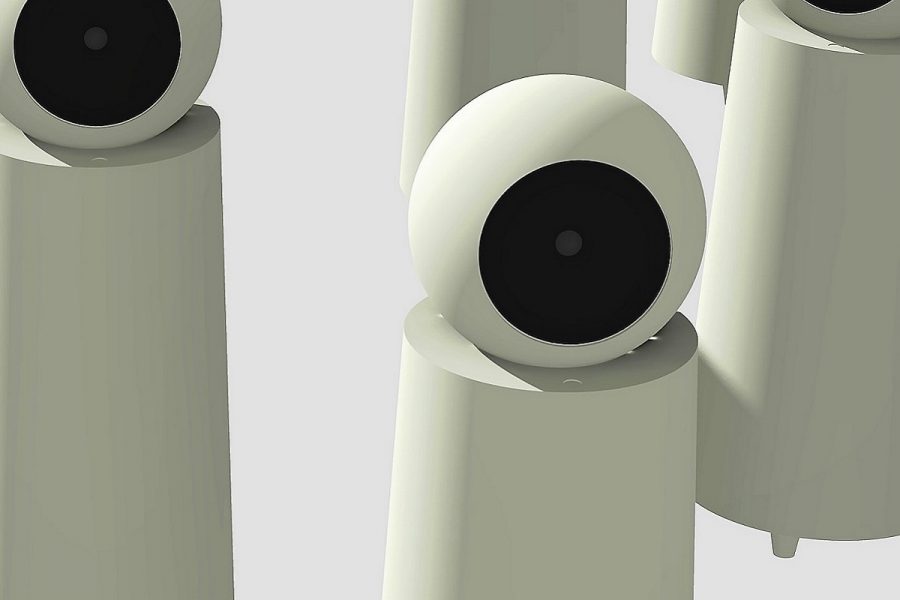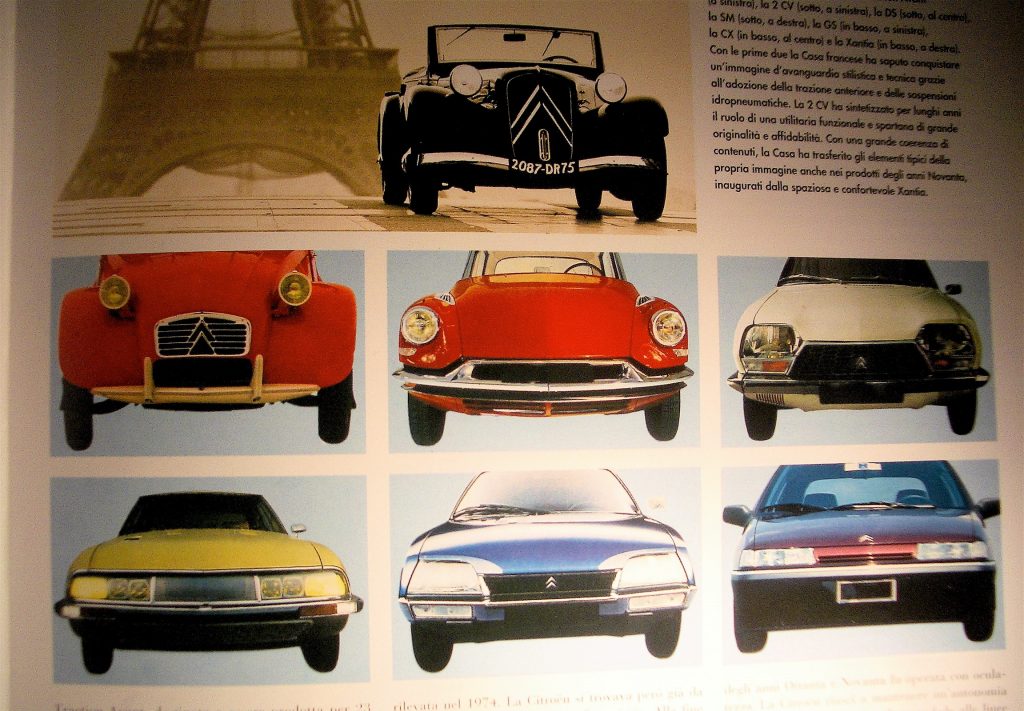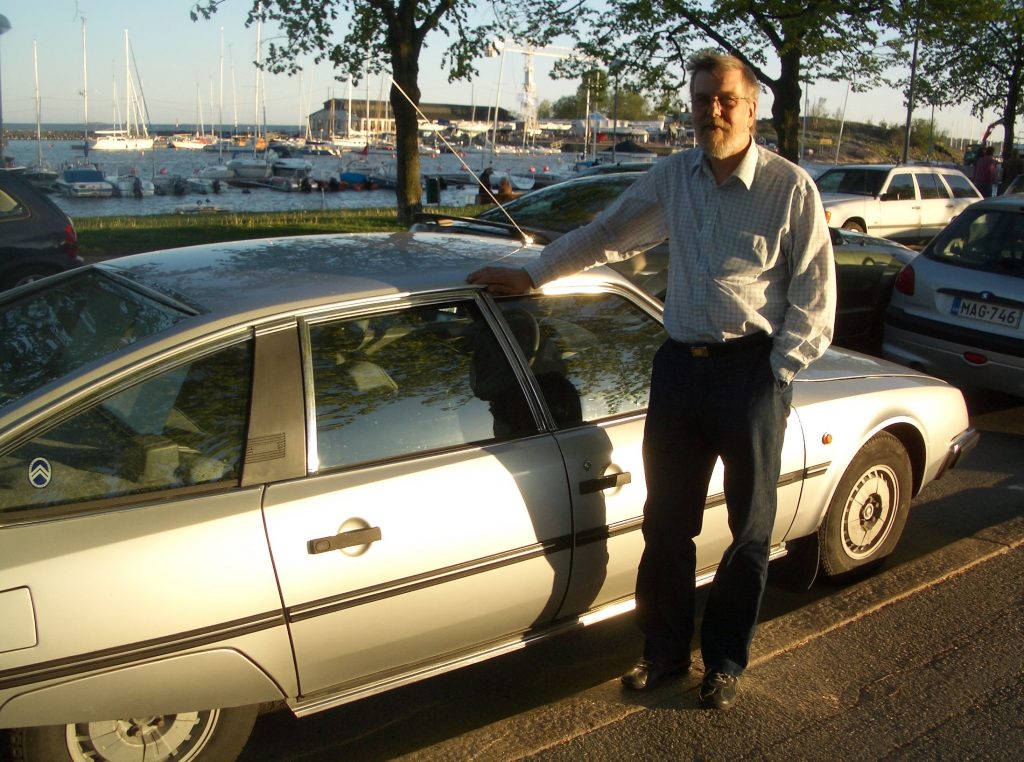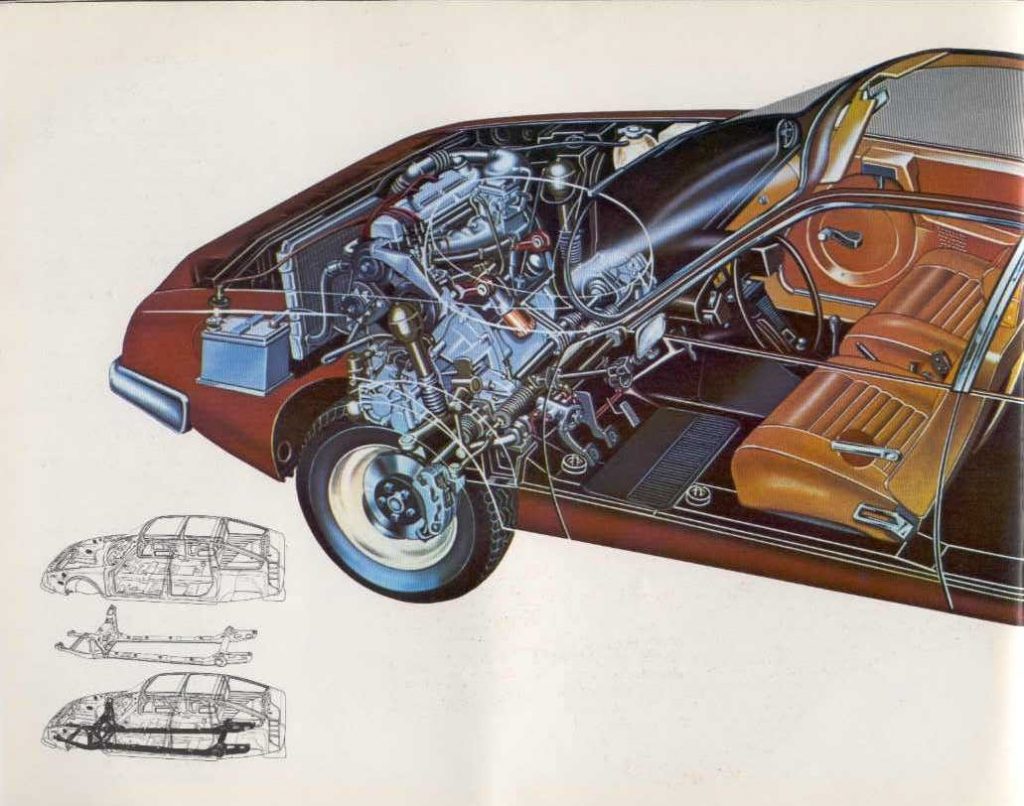In the corner of Gradient’s large, still deserted exhibition hall sits a lonely table-tennis table. Numbered prints of paintings cover its surface. The images, mostly of landscapes drawn with a photographic accuracy, are from the hand of a good Japanese friend of Gradient’s head designer Jorma Salmi. The friend sent the images to Salmi as a gesture of good will after having bought Gradient’s subwoofers for his Quad ESL63’s.
Many of Salmi’s customers have also become his friends. I don’t believe it’s an accident. There’s something about what and how Gradient does that strongly appeals to some people. Not flighty busybodies. Not those seeking attention with flashy appearance. Not for trendy and fashionable. Not for pretentious. But for those who proceed slowly, let the reason guide, and stay consistent and truthful to their principles, there’s a good chance for a long-lasting commitment and bondage with the brand. Gradient is not the only such brand that exists but definitely one of them.
Another long-time acquantaince, and also an owner of Gradient loudspeakers, emailed Salmi the often cited video presentation by Dr. Floyd E. Toole (click to open it):
Before I have a chance to say anything Salmi confesses to be “Toolean”. He also refers to Toole’s colleague Sean Olive and other great clever minds in the field.
To be Toolean means indiscriminate support for scientific method – ”objectivism” – which in this specific context can be defined as the requirement to support all kinds of claims about audio with scientific evidence. With regard to loudspeakers it implies not only that the loudspeakers are to be subjected to objective measurements (spin arounds etc.), but that subjective evaluations of their sound quality, should be too (double blind tests etc.).
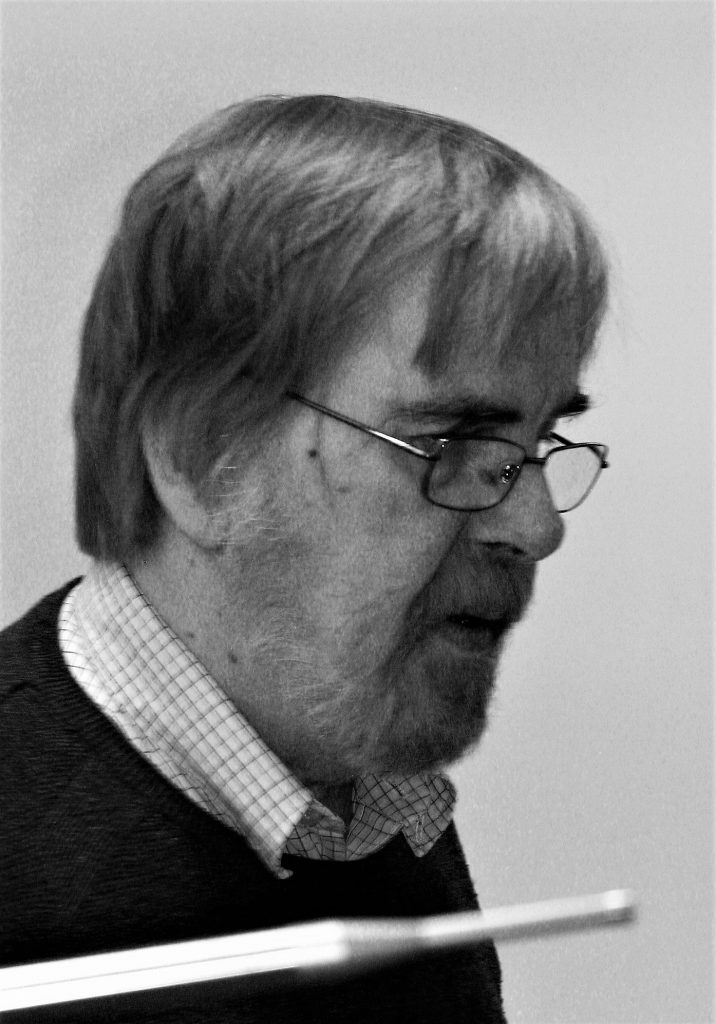 ”Only on two points I disagree with Toole. First off, I think he underestimates the effect of other than purely aural impressions in evaluating the sound quality”, Salmi comments.
”Only on two points I disagree with Toole. First off, I think he underestimates the effect of other than purely aural impressions in evaluating the sound quality”, Salmi comments.
This sounds odd from the mouth of an objectivist. For long I thought that objectivists, by referring to factors extra to the sound quality, just expressed their contempt for people (subjectivists) who heard a difference in sound quality when there objectively was none; or (Toolean version of the contempt) when instead of ”objectively” assessing the sound quality, let the fancy outlooks, the higher price (prestige) or some other inappropriate and irrelevant factor, not a direct function of the sound quality itself, affect their judgement.
I ask clarification.
”Maybe Toole should reconsider whether making his tests blind factually is the most effective and the most objective method in trying to investigate how we perceive the sound.” This is getting really puzzling. Should the speakers under scrutiny be made visible to study subjects? This would be in direct opposition to what Toole demands.
I do understand Salmi’s concern against the background that over the years, decades even, Gradient has probably suffered from stubbornly never wanting to gain competitiveness edge by swelling the size of their speakers, or by playing with fancy designs and the prestige card, or by setting the price at an unachievable level for laymen just to attract a certain market segment.
Instead Gradient has put all the stakes in the acoustical design. It has also made clear that it has done so. Hopes for quick profits have been set aside in anticipation of their approach slowly but steadily winning friends. If you happen to remember what sort of reputation Quad’s products once (at the peak of their success) enjoyed, you know what I mean. An unavoidable consequence of the approach or the strategy is that in proportion to their exemplary sound quality, Gradient’s speakers look, apart from the 1.5 perhaps, quite modest. Honest but modest. It would be a simplification to say that they sound a way better than they look, because the designs have their strong points too, but not entirely false.
Like Toole, Salmi likes thinking objectively. When he suggests revaluation the adequacy of blind testing, he’s sincerely and seriously looking for some rational explanation for the reactions of some people when assessing the sound quality of the speakers. Not leaving the idea on a general level he mentions a study regarding the role of visual information in forming an auditory perception, made by a group of researchers in the department of Cognitive Neuroscience at the Aalto University in the early 1990s (”Seeing speech: visual information from lip movements modifies activity in the human auditory cortex”. Neuroscience Letters, 1991).
Lip reading
Here’s the Abstract:
”Neuromagnetic responses were recorded over the left hemisphere to find out in which cortical area the heard and seen speech are integrated. Auditory stimuli were Finnish/pa/syllables presented together with a videotaped face articulating either the concordant syllable/pa/(84% of stimuli, V= A) or the discordant syllable/ka/(16%, V≠ A). In some subjects the probabilities were reversed. The subjects heard V≠ A stimuli as/ta/or/ka/. The magnetic responses to infrequent perceptions elicited a specific waveform which could be explained by activity in the supra-temporal auditory cortex. The results show that visual information from articulatory movements has an entry into the auditory cortex.” (italics by the chief editor)
Having rejected two classical accounts, the researchers concluded that ”In face-to-face communication the speech can be ‘seen’ before it is heard; visual cues, e.g., from lip movements, exist in some cases hundreds of milliseconds before the corresponding auditory stimulus.” That is, responses to acoustically identical but perceptually different auditory stimuli indicated that processing of (speech) sounds (in the human auditory cortex) could be affected by visual input.
”I find it fascinating that the auditory perception turned out to be dependent of the visual perception to the extent that the study subjects ”heard” the sound best when they only saw the object, better than when they saw and heard it, and definitely better than when they just heard the sound!”, Salmi comments on the research.
Salmi hardly expected the above case-study directly lend support for making listening tests openly rather than blind (after all lip reading is lip reading and listening to a loudspeaker something different). What he meant was that from the scientific point of view the importance of the effect of the visual or other stimuli in sound perception – “crosstalk between different sensory observations” – ought not be neglected. Other factors, in addition to the sound itself – say, the color – may factually affect on how we assess the sound quality to the extent that the two might not be groundlessly separated. Maybe there is no pure, unadulterated sound quality. Think of that.
Salmi here differs from many objectivists I know, who pretend to be open to new hypotheses when honestly speaking are just open to their own preconceptions and prejudices. Also I find that Salmi’s objectivism, unlike that of some other objectivists, is not malicious, arrogant and pejorative (there’s a tone of that in the Toole’s presentation too). He may be irritated and annoyed once in a while in front of the worst manifestations of irrationality but his modest personality – I’ve know him from early 90s – prevents him from getting pleasure from depreciating less smart and superstitious fellow hobbyists.
More psychology
On the floor of the Gradient’s official listening space, next to rare Quad power amps, I notice a Lenco 75 turntable with a vintage SME tonearm. It’s a fine player, Salmi notes, and adds that at home he’s got the Garrard 301 with a classic 12” Ortofon tonearm waiting to be refurbished “as soon as I find time for the project”.
What is this? Why isn’t he running after the latest technogical inventions and innovative new solutions as eg. Toole urges people to do? After all:
”Class D amps are just perfect! Just imagine how small electronics and crossovers are nowadays and how they’re getting cheaper and cheaper!”, Salmi rejoices.
When Salmi picked me up from the bus station (Porvoo is a small historical town on the Southern cost of Finland) he drove his Citroen Xantia from the 1990s. That’s his present winter car after the defective Citroen XM. During the sunnier summer months Salmi enjoys his two other Citroens, the cute Visa from 1986 and his true love from 1985: Citroen CX.
A 33 year old CX?
”Objectively” any new car, even the cheapest ones, are unquestionably technically more advanced and safer and what have you, than his Citroens, much in the same way as Toole believes that the sound of modern speakers is clearly better than the sound quality 10 years ago ”not to speak of 20 years ago”.
Isn’t there a contradiction? Not living as one preaches is not an innocent business. It is rationality that makes the objectivists set certain technical solutions above others in the first place, and it’s the same rationality that demands the objectivists to act according to their own preference order. Not doing so what be arbitrary and incidental. Not scientific at all. As Toole correctly states: ”Science is a black and white thing, something either is or isn’t”. If an objectivist doesn’t want to contradict with himself, must he not, by the dictates of reason, prefer the most recent and technically advanced cars/loudspeakers/turntables over the older and less advanced ones?
But Salmi doesn’t?
Well, first off, he doesn’t agree upon the conclusion. For him it’s clear that an objectivist too understands that technological development nowadays, for a big part, is pseudo-development where the sole purpose of the development is just to make things cheaper and thereby often also worse.
“Old and better have become too expensive. The old durable products with a longer life-span have become luxury that the industry no longer can afford. I don’t think objectivists need to believe that cheap Chinese quartz watches were better than well-made, “old-fashioned” mechanical watches simply because they are likely more accurate. What do you do with a Chinese quartz watch when the battery runs out?”
And the same applies to vintage cars. No doubt Salmi’s love for the bigger Citroens, especially the older ones, does contain inner elements that cannot be explained scientifically (the sensation caused by the CX’s smooth profile, for instance). But that’s not everything. Cars are for driving, and he likes driving a car. Given this, he holds onto the belief that the CX is a very good car to drive, objectively, thanks eg. to its revolutionary hydropneumatic self-leveling suspension system and Diravi steering (Direction Rappel Asservi). These solid technical solutions allow for a high cruise speed and keep the driver fresh (non-resonant) even on long journeys and uneven surfaces.
Thus, Salmi’s interest in vintage is not just fueled by by technological nostalgia or romanticism but stems from the respect he has for technology that was, and in some cases still is, highly innovative and much ahead of its time. And that certainly applies as much to his CX as to his Lenco 75 and Garrard 301.
What really pisses him off though is that:
”Some extreme hobbyists go and replace the soft oil-absorbing bronze thrust pad of the 301 with an inferior and too small ceramic or steel ball.”
The sound of a speaker is the sound of the room
The second point upon which Salmi quite doesn’t agree with Toole is the impact of the room (the room effect) on the sound quality. He’s not saying Toole’s ”listening through rooms” argument (the ability to listen to the sound as if there were no room effect) could not be somehow true about subjective listening tests, but much more importantly, Toole doesn’t stress enough this: “a bad room spoils the sound, and a good one makes a beautiful sound”.
This is central because what we’re listening to when we’re listening to a loudspeaker is the room. There is overwhelming evidence that this is the case, and Salmi just makes a quick reference to studies made by the microphone company Bruel & Kjaer, according to which people rated the tested loudspeakers quite differently depending on the room in which they were listened to.
“It’s not enough to have smooth free-field and power responses. It’s the relationship between the two that matters … it has to be a good one. One cannot change one without changing the other.”
Fundamentally I think Toole and Salmi agree on the requirements concerning free-field and power responses, as well as the need to control directivity (Gradient certainly does spin-arounds, ie. measure the power response of their speakers) but there is a difference too: where Toole’s speakers (Harman, JBL) are quite ordinary in that they allow omnidirectionality at low frequencies and then match the directivity differences at higher frequency bands with or without a waveguide or something (such speakers Finland is full of). Salmi’s creations, however, are designed to control the sound also on low frequencies, and reduce the influence of room reflections (the floor, the side walls, ceiling etc.) by all possible means.
Here’s a commercial tinge too: if a loudspeaker is meant to sound equally good in a large number of different spaces, the independence of the sound from the room is non sine qua. If the quality of the loudspeakers were measured by how differently or not they sound first in a shop and then at home, Gradients would be among the very best speakers on the market. Their materialized sound quality in the living room can pretty well be predicted in the shop, take my word for it.
The new 1.4 is no different. It is loyal to the company tradition. It follows the same well-proven ”functional” design principles as all other Gradient speakers before it. Every aspect of its form has some well-defined purpose. One cannot point a finger to where the form would have stopped following the function. This may sound exaggerated, but that’s how it is. Nothing is left to chance, and that makes one feel comfortable and confident, to say the least.
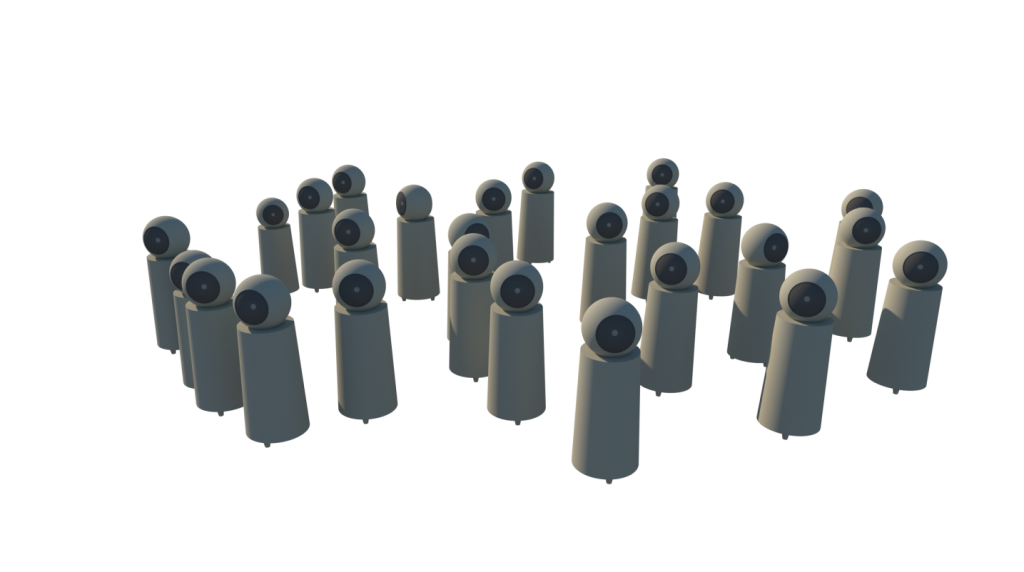
The new Gradient 1.4
When the Gradient 1.5 was launched in 2007 my first thought was that here’s a fusion of the 1.3 and the Revolution. It turned out not to be. The 1.5 was more like the Revolution in new and wilder dimensions. The 1.4 is different. It provides a direct link between the 1997 discontinued 1.3 and the 1993 launched Revolution. A synthesis.
The conical bottom section (bass) is from the 1.3, although differently shaped. The mid/treble top section sports a coaxial driver in a cardioid enclosure, just like in the Revolution except that a sphere has replaced the tetrahedron.
Let’s have a closer look.
The cabinet is made of advanced 2-component technopolymer, the same one as in the 1.3! It’s a durable material providing easy to clean and long-lasting surface. It also provides ”exceptional combination of stiffness and rigidness”. The material itself is effective in eliminating cabinet resonances, but equally importantly, it enables to obtain, with respect to resonances, the ideal form of the speaker.
”I’m quite happy how we’ve managed to get the cabinets behave resonance-wise. The material is a big part of the success. Thanks to it, the whole 35L volume (20L in the 1.3 ed. note) is in use. The internal dimensions are ideal. The height of the bass cabinet is 70cm, meaning that the first internal standing wave is roughly a half-wave of the crossover frequency, and the mode is further attenuated by an internal construction, a perforated plate, that also further dampens cabinet resonances”, Salmi explains.
The ported bass enclosure features a modern 220mm long throw, linear excursion aluminium cone woofer by SEAS, tuned at 27Hz. The large crossection area of the reflex tunnel is said to prevent breathing noise even at high sound levels. The woofer shoots directly (180 degrees) to the floor from the distance of a few centimeters, thus avoiding, among other things, typical floor reflection problems around 200-250Hz. The -6db point of the bass response is 30 Hz.
What about the differences in directivity and radiation patterns between the downward shooting bass and the forward shooting midrange/tweeter unit 80cm above?
”I’m not concerned. The low crossover frequency … at 200 Hz the wave length is about 1,5m … takes care of the unity and coherence of the sound. The distance between the woofer and the mid/tweeter will not be a problem, they will not conflict each other. Moreover, our ability to perceive the direction of the sound is much better horizontally than it is vertically.”
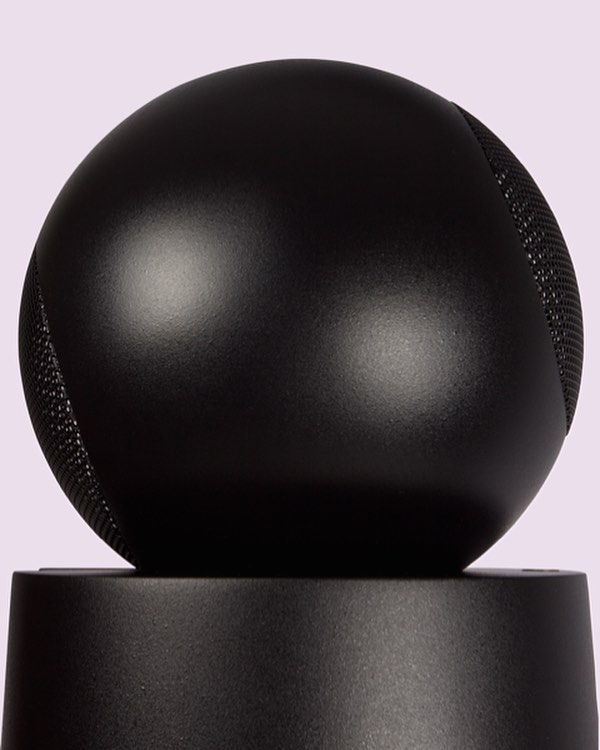
The sphere
The midrange driver of the 1.3 was an open back (no enclosure) 12” plastic cone unit. At some point of the development phase Salmi was considering a similar dipole solution for the coaxial driver of the 1.4. The prototype quickly proved the idea impractical. So a sphere it was going to be, and it wasn’t the first time Salmi was entertaining the idea of a sphere: he once planned a similar sphere for the Revolution!
The sphere of the 1.4 is not like the famous vintage sphere by Grundig (Audiorama), which was a multi-unit design. Instead, it resembles the sphere of the Telefunken TL1000 or more recently the French Elipson Planet L, which both sport a coaxial bass/midrange/tweeter unit.
An increasing number of speaker companies have gone for coaxial drivers in their speakers during past ten years or so (KEF with the Uni-Q, for instance). Gradient chose one for its speaker as early as 1993. Several versions of the driver have been developed ever since, and when I say ”have been developed” I don’t mean that Gradient would have ordered units from SEAS according to its own specs but that Salmi has actively taken part in the development process helping them to come up with better versions.
The 1.4 is the first Gradient model to use the brand new 176mm coaxial driver with a reed-paper cone. The driver handles frequencies from 200Hz up to 2500Hz. Frequencies higher than that are reproduced with a 25mm Al/Mg-dome tweeter placed at the apex of the midrange cone. The sensitivity of the driver is higher than that of the earlier versions.
Such a driver provides an ideal point source ”with excellent phase and amplitude response”, of course, but what’s new this time is the newly developed inverted bearing/suspension. As a result, there are less driver-based diffractions and discontinuities in the response as before.
I ask if such tiny diffractions and discontinuities really are that bad in real life situations? Does it matter if there are small wrinkles in the response, say, around 12kHz?
”Diffractions and discontinuities due to the driver, or the cabinet edges, can be clearly heard in an anechoic chamber, and are worst on-axis. But it’s true that in real rooms they are often masked by other reflections from the room and surrounding surfaces. But you know, I’m an old-fashioned engineer, I believe in the measurements. Good measurements are a prerequisite for a loudspeaker to work properly. I want my speakers measure well from all angles, and the wrinkles in the response disturb me even if no-one could ever hear them!”
What matters here too is that the cone of the 170mm coaxial driver starts to direct the sound at frequencies above a certain threshold. The edgeless sphere does not give rise to any cabinet born diffractions, of course. ”The rigid sphere makes a very good construction, and theoretically at least, measures perfectly from all directions.”
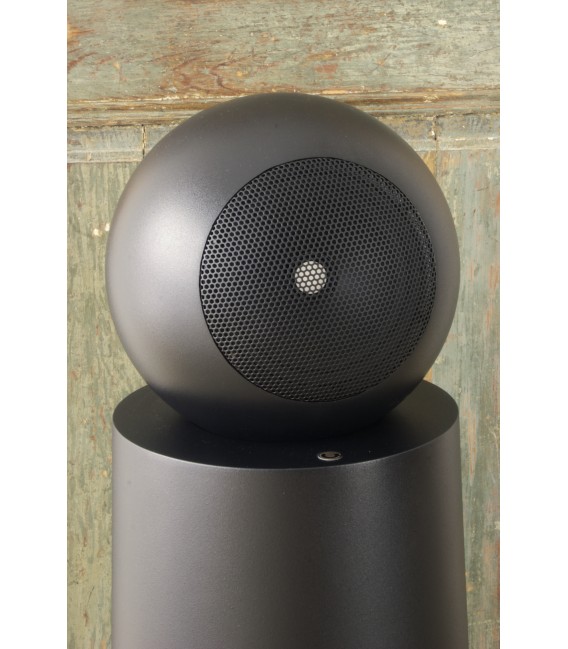
Cardioid
Where the sphere of the Elipson Planet L is ported, the sphere of the 1.4 is an acoustic resistance enclosure, ie. cardioid. The sphere is an ideal enclosure for using the cardioid principle: the symmetric spherical housing leaks “anti sound” from the opening behind the sphere through a perforated plate and a fabric, cancelling backward radiation by 20dB at mid frequencies.
The result? Only 1% percentage (2% in the Revolutions) of the total sound energy is leaked backwards! Thus the 1.4. ignores early reflections from the surfaces behind the loudspeaker almost completely, reducing the influence of the room markedly, and permitting placing the speaker near the wall behind it.
There are loudspeakers out there that do the same, such as the much debated Bruno Putzey’s Kii Three, and I ask Salmi what he thinks about it:
“It’s a good compact speaker. But why do it in such a complicated way?”, Salmi ponders. Kii Three is heavily leaning on DSP and active amplification. Gradient’s been studying and implementing radiation control for more than 30 years, but on the level of basic and solid loudspeaker design, not by manipulating the response digitally. The sphere of the 1.4 directs the sound forward 90 degrees (- 6db), and can be tilted vertically to change the angle with respect to the floor.
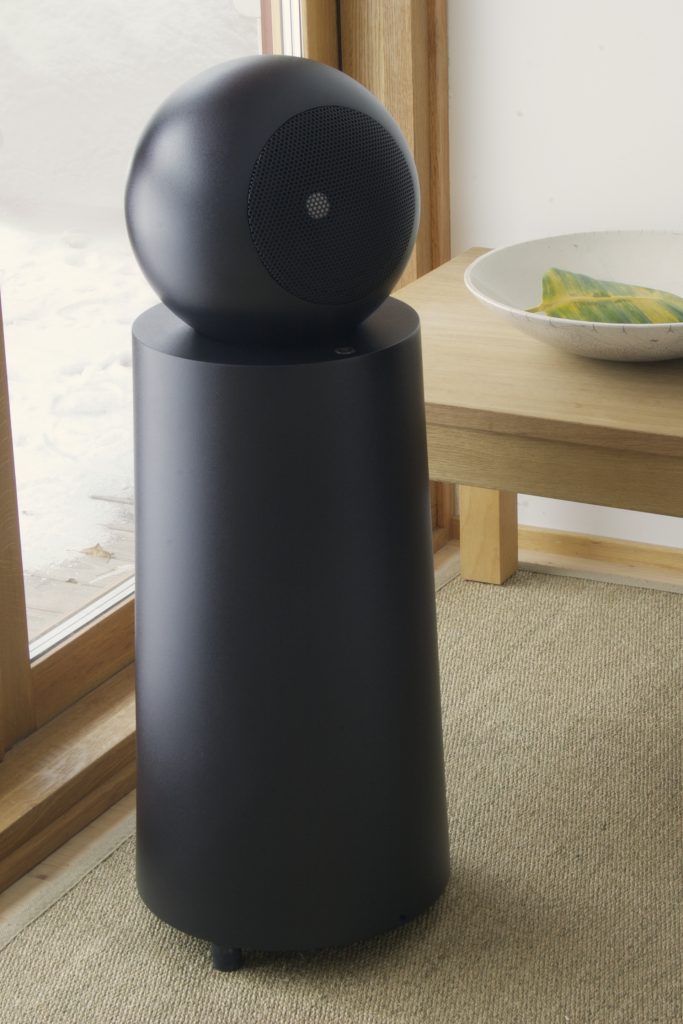 First impressions
First impressions
The purpose of my visit to Gradient wasn’t to pen a review of the new 1.4 but to have a chat with Jorma Salmi – something after which one always notices too have learned a thing or two. So I didn’t go through all the music samples that I would have normally used for critical listening. Instead, we both, Salmi and I, chose one album of orchestral music, one of vocal music and one or two something else (predominantly classic music), and would listen to them by turns.
What can I say? Competent and convincing! Very much so. Very systematic. Disarming in their own original way. Those were the first words that leaped to my mind. The 1.4 sounded precisely as they were designed to sound. The same characteristics. The same virtues. Is anyone surprised? If you’ve followed me down here, I’m sure you understand. Just a few observations.
First, the purity of the sound. By the purity I do mean the opposite of the impurity – distortion, grain, noise etc. (of course that too). Instead I mean ”the-room-does-not-participate-in-the-party” kind of purity. It’s easy to identify and pinpoint if one already knows Gradient speakers, but it may come as a surprise to someone less familiar with them. Here’s one way to describe it: we were listening far-field (>4m away from the speaker line) but the sound was as if we were listening near-field! Amazing, believe me.
Second, the speakers were placed close to the wall but the soundstage and imaging stayed accurate and stable preserving its three-dimensionality.
I once had a chance to make a proper comparison between the 1.5 and the Revolution. Both speakers did the typical Gradient trick: disappeared, making it hard to associate the sound with the speaker cabinets. The same immateriality of the sound is true of the 1.4. However, there was also a difference between the 1.5 and the Revolution: the latter centered the sound between the speakers and made it escape backwards (how much, depended on the recording) while the 1.5 made the sound be more everywhere, spread it horizontally outside the speakers, rather than focused on keeping it in the middle. Now, based on our short listening session, I’d say that in comparison, the 1.4 is somewhere between the two in its habit to locate the sound. Confirming this would require more music tough.
Third. When listening to music just for my own pleasure, I try to keep the score in front my inner eyes. In other words, I try to imagine how the composer wanted the music come out in musical terms, not how s/he imagined his or her music would sound. That is, to me the score provides the ideal, though imaginary, reference point for the sound reproduction.
Gradient loudspeakers, on the other hand, are designed to be in the ”service of recordings”. Intentions of the composer do not matter, or matter only secondarily. What matters is how the music/sound is recorded and saved on the album, which then acts as the reference for the Gradient speakers set to reproduce the material as neutrally as possible. This is exactly what Toole is striving for: “perfect recordings, neutral loudspeakers”.
Why the 1.4?
What need was the new speaker designed to satisfy?
”Well, we already had the models 1.0, 1.1, 1.2, 1.3 … and 1.5. The 1.4 was missing. The legendary 1.3 was discontinued in 1997, already 20 years ago. The Revolution was launched in 1993, that is, 25 years ago. As much as to launch a new future-looking speaker model, we wanted to offer our customers something that pays tribute to our past, reminds the public of our roots and celebrates our achievements in speaker building. The 1.4 does exactly this, and is firmly in line with what we’ve been doing in the past three decades”, replies Atte Salmi, the owner and CEO of Gradient, and goes on:
“The 1.4 also brings some unity to our product portfolio. In terms of their sound quality and technological advancement our speakers have always been highly systematic but the collection could have been more coherent in the past few years. Maybe the Gradient 1.4 shows the direction.
The design is not self-evident. The 1.4 is a combination of basic elements like sphere and cone. It is also functional in design, every aspect in the form has a purpose which originates from the function. The Gradient 1.4 will be available in graphite black and white, but it will also be possible to combine, for example, a black sphere with a white bottom, or the other way round.”
I ask Jorma Salmi why Gradient initially named its loudspeakers with numbers? Why not names? Jorma Salmi has a ready answer: “It’s easy to invent numbers! 1.0 and so on. I don’t think it’s boring. It’s a very clear way to name the speakers.”
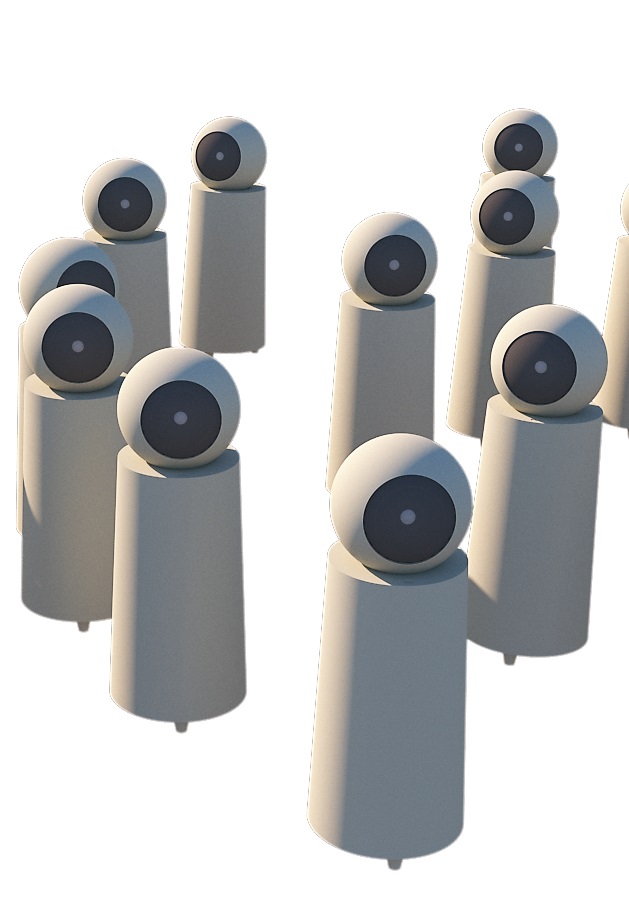 Returning to Toole
Returning to Toole
Towards the end of our conversation I express my personal reservations regarding Toole’s presentation, one of which is this: if Toole is right (ie. in a correctly arranged double blind tests people’s sonic preferences strongly converge), there’s just one type of sound/loudspeaker which is to be preferred over all other ones. That result may be fine for speaker manufacturers (Harman) but for hobbyists the idea of one ideal speaker is just crazy, maximally antithetical. It goes against everything that hobbying is essentially about: a life-long search of something (sound and technology) that resonates with the hobbyist on a deep emotional level. Chasing a sound that pleases majority of consumers in blind tests I find almost perverse.
I also think Toole over-rates the importance of the sound quality in the totality of hobbying. The sound quality serves just as a rather simple motif, plot, in the narrative when in fact hobbying is motivated by a complex tangle of goals and desires. The sound quality is just one of the dozen variables in the equation.
Salmi patiently listens to my tirade and then smilingly responds:
”I’m going to that direction!”
It would be lovely to stop the story here. But I must ask one more thing. It deals with a documentary film I saw recently. In it young technicians of the famous animation studio Studio Ghibli were eager to demo the founder and the old Master of the studio, Hayao Miyazaki, their new digital animation program, which they claimed, is so good that there’s no way of telling whether the film is drawn by hand or by the computer. So my question was: If it can be “scientifically” (in double “blind” tests) proved that human beings cannot distinguish between the two, does it then matter which method is used?
Miyazaki, who always draws by hand, wasn’t too enthusiastic about what he saw, but how did Salmi respond? I let you guess.
Defending the objective approach.


